I first encountered the legendary Nikonos cameras in January 1983, when, as a freshly qualified SCUBA diver I spent a couple of weeks diving with family friend Rob Van der Loos, who was living in Alotau, Milne Bay, Papua New Guinea. Rob had a Nikonos II and Nikonos III at the time and was doing a lot of macro photography in soft sediment habitats close to Alotau town at night, using underwater flashes, and extension tubes for the 35mm F2.5 lens. I was completing a degree in marine science at the time so tried to use some of my rudimentary learnings to help him classify some of the staggering diversity of spectacular critters he was photographing. The slides produced by the Nikonos cameras were mesmerizingly beautiful. Decades later ‘muck diving’ became a thing. We also did a lot of reef dives and I can confirm that Milne Bay is a diving mecca for good reason.
Fast forward to the late 80s and I encountered images made by a Nikonos II again, this time at a slide show in Melbourne by a French/Colombian couple who had just completed a ‘lap’ of Australia. The images were all above-water subjects – mostly of the well-known tourist landmarks (Uluru, Katajuta, Purnulu, Nitmiluk Gorge etc) – shot on Kodachrome 64. They had been metered with the Sekonic Marine Meter – a very accurate waterproof incident light meter. I was stunned by the rich colour and detail of pictures made with such a simple mechanical camera and one prime lens.
The Nikonos cameras are literally built like bathyscapes. They ooze indestructibility. Their weight and solidity makes them a real pleasure to shoot, and the fact that they also lack a mirror means you can push the low shutter speed envelope just that smidge more with them.
Wikipedia reports that the early Nikonos – presumably the Nikonos 1 (1963) and/or the Nikonos II (1968) – was ‘an important tool for photographers working in the steaming jungles, flooded rice paddies, and rain-lashed battlefields of the Vietnam War’. There I was thinking the Nikon F1 was the only hero of that period.
By 1989 I had acquired my own Nikonos III, macro extension tubes and underwater flash (and the Sekonic Marine Meter II), all second-hand, and had started an underwater photography ‘habit’ that I have never shaken. Two years later I bought a Nikonos V (which I still have) and while it was mostly used underwater, I also started using it routinely as a take-anywhere camera that consistently produced excellent quality above-water images for the next decade and a half. I’m sharing some of them below.
I don’t really want to compare the Nikonos V with modern ‘action’/’tough’ cameras (or indeed phones) – we all know their insane versatility – 6K video, macro, HDR, focus stacking etc. They can probably lock focus on a diver’s eyes through their dive mask for all I know. I’ve been using Go-Pros for the last few years and they are super portable and very useful. But when I look back on the underwater and topside images I’ve made with the Nikonos cameras (all on slide film), there is really nothing at all to complain or nit-pick about. The amphibious 35mm F2.5 lens is as awesome as the Nikonos 15mm, 20mm and 28mm underwater-only lenses. Its distortion-free 6-element double-Gauss design has remained unchanged since 1963 though the modern multi-coatings are no doubt better than the original ones. However, along with most other commentators I’ve seen review this lens, I acknowledge it is most rewarding when used above water, or with extension tubes and flash as an underwater macro system (each macro tube comes with a set of ‘goal posts’ that bolt onto the tube to show you the plane of focus and frame area). If you want more technical info about both the 35mm lens and the Nikonos V camera, Ken Rockwell does a pretty thorough review of it here and there is a great history of the lens, including a diagram of its optical construction, by Kouichi Ohshita here. I have simply never seen any aspect of an image made with it that I could attribute to an optical deficiency of any kind. It is a stellar all-rounder. You of course have to guess focus distance, but the depth-of-field indicator scale on the lens is easy to use, and reliable.
The biggest constraint on the continued use of the Nikonos (or indeed any other film camera) as a travel-cam these days is the difficulty of getting through airports without having your film fried in one of the new generation of x-ray machines. I’ve read about some strategies one can adopt, like putting a roll of high-speed film in with any slower-speed film you intend to shoot in a clear plastic bag and using that as an excuse for manual inspection, but I have not personally tested this approach yet!
Below is a selection of (mostly above water) images that my Nikonos cameras have delivered since the early ‘90s with some brief notes about each. Most were shot on Velvia 50 or 100 or Provia 100.
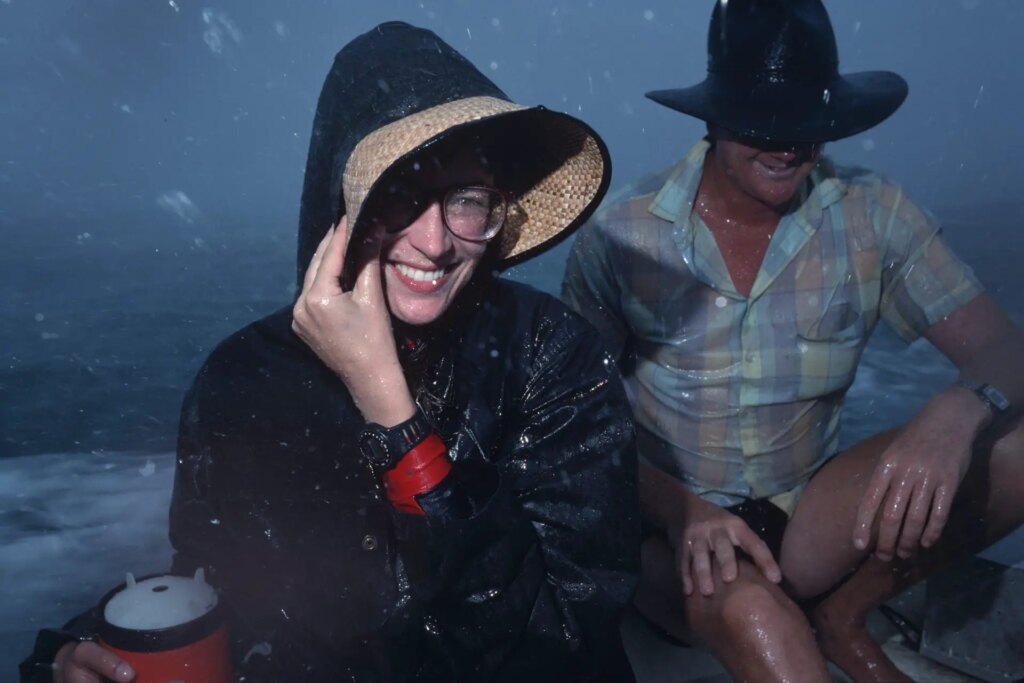
Catherine (and everyone else) enjoying a tropical rain-shower on the way to a dive, Gizo, Western Solomon Islands.
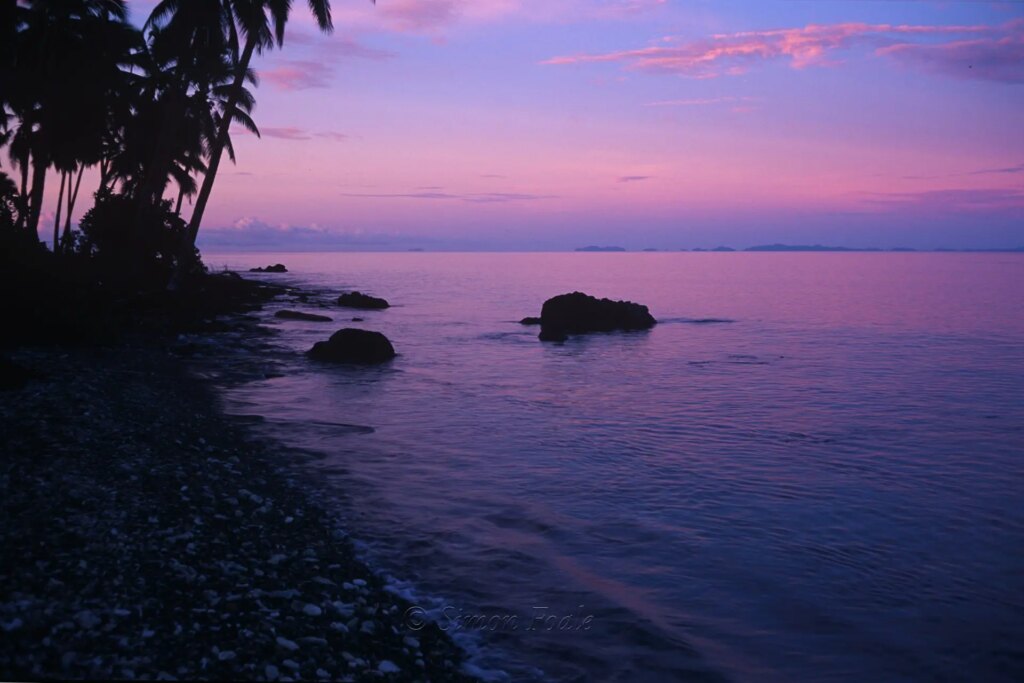
Sunset at ‘Bonegi 1’ the site of the wreck of the Hirokawa Maru, a few kilometers west of Honiara, Solomon Islands. This is one of my favourite dive sites. At night if you sit quietly on the bottom and turn your torch off, you can often find yourself surrounded by hundreds of twinkling lights from schools of flashlight fish (Anomalops kaloptron) – one of the more cosmic experiences you can have diving in the Western Pacific. I steadied the camera on a coconut stump for this shot.
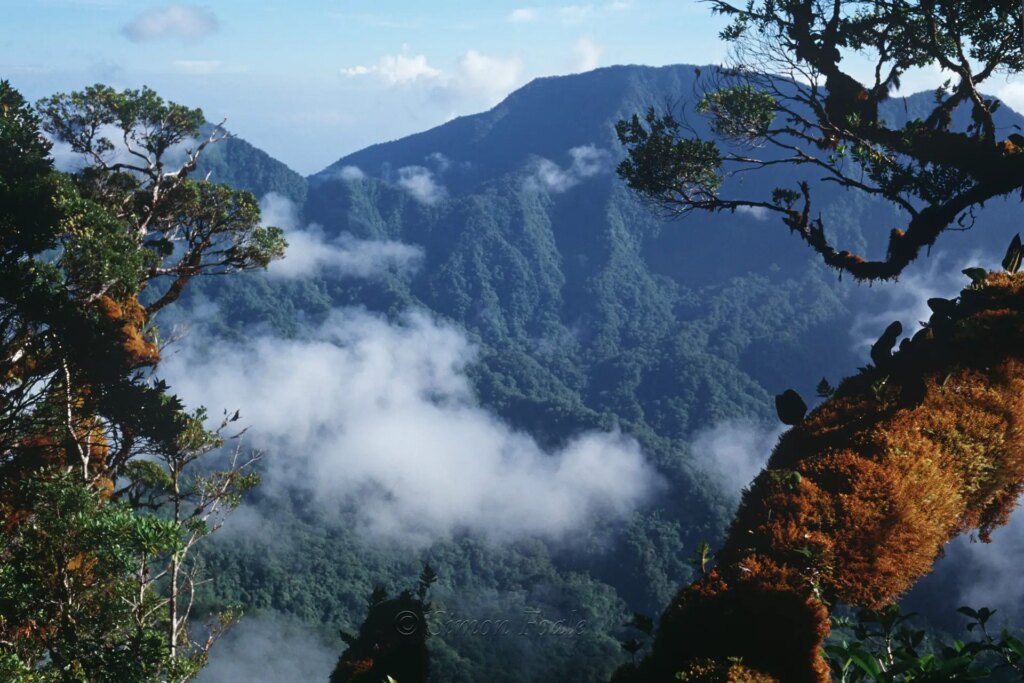
The view across the (long extinct) volcanic crater of Kolombangara Island (Western Province, Solomon Islands) from Mt Rano. The walk up is typically done in two stages – the first is from the coast to ‘The Professor’s Camp’ (apparently thus named because Jared Diamond used to camp there on his bird research trips), which is about three quarters of the way up. The final quarter of the climb is done early the next morning to get a view over the crater before it clouds over (the cloud forest flora in the shot is a bit of a giveaway). Then the long, knee-torturing descent on the same day. A waterproof camera is handy in this very wet environment.
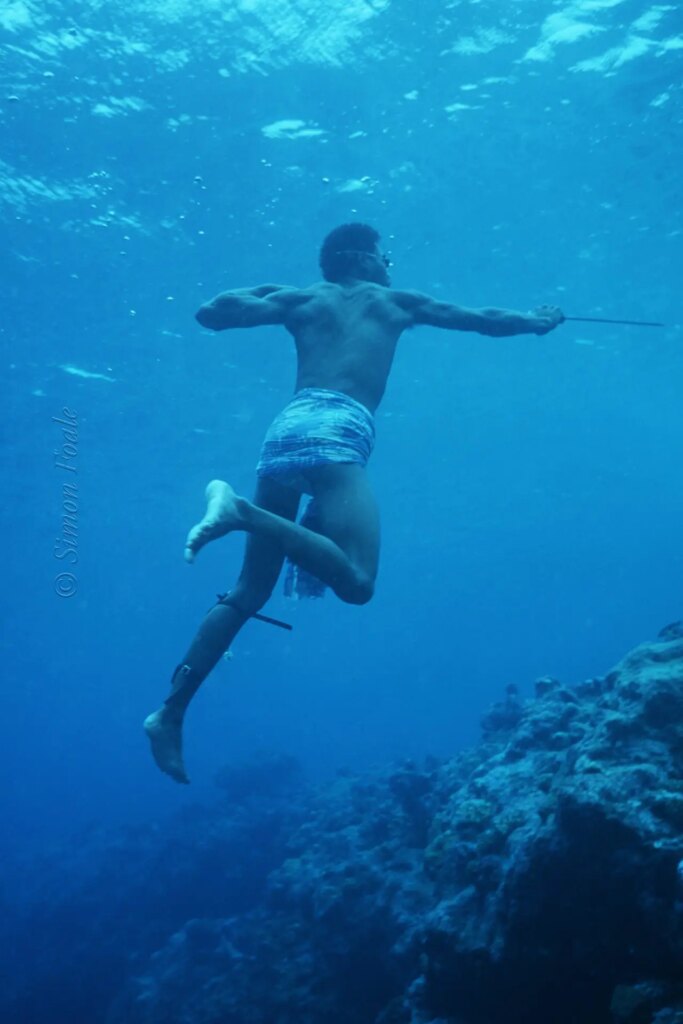
A Sikaiana spearfisherman about to shoot a fish. Sikaiana Atoll, Malaita Province, Solomon Islands. This shot was made on snorkel with a Nikonos III body, the 35mm lens and the Sekonic Marine Meter.
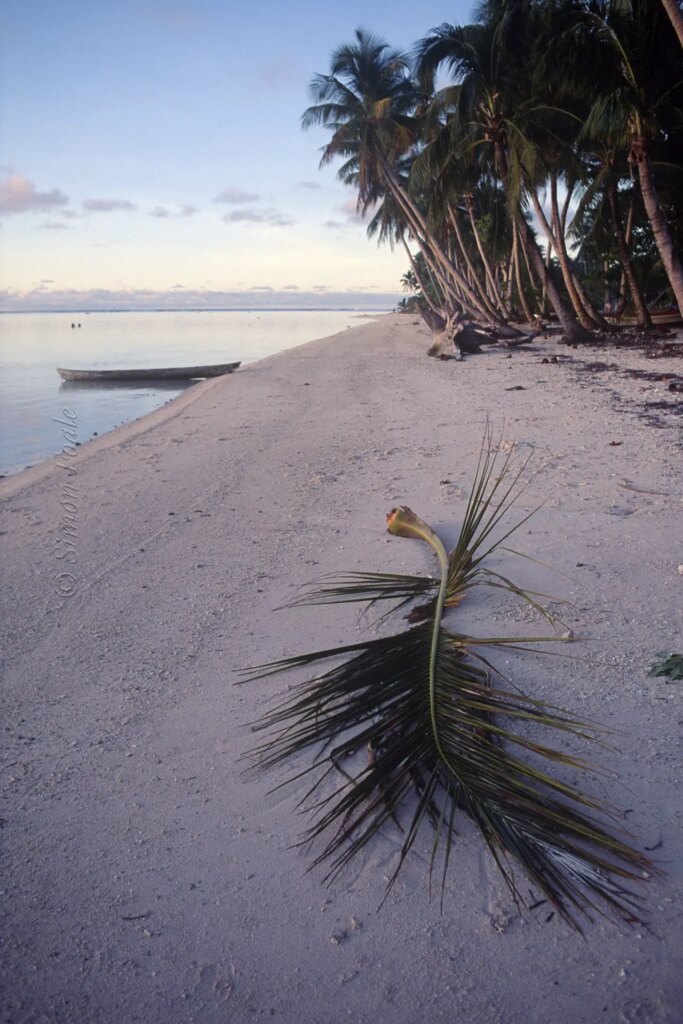
The lagoon-side beach at Sikaiana Island.
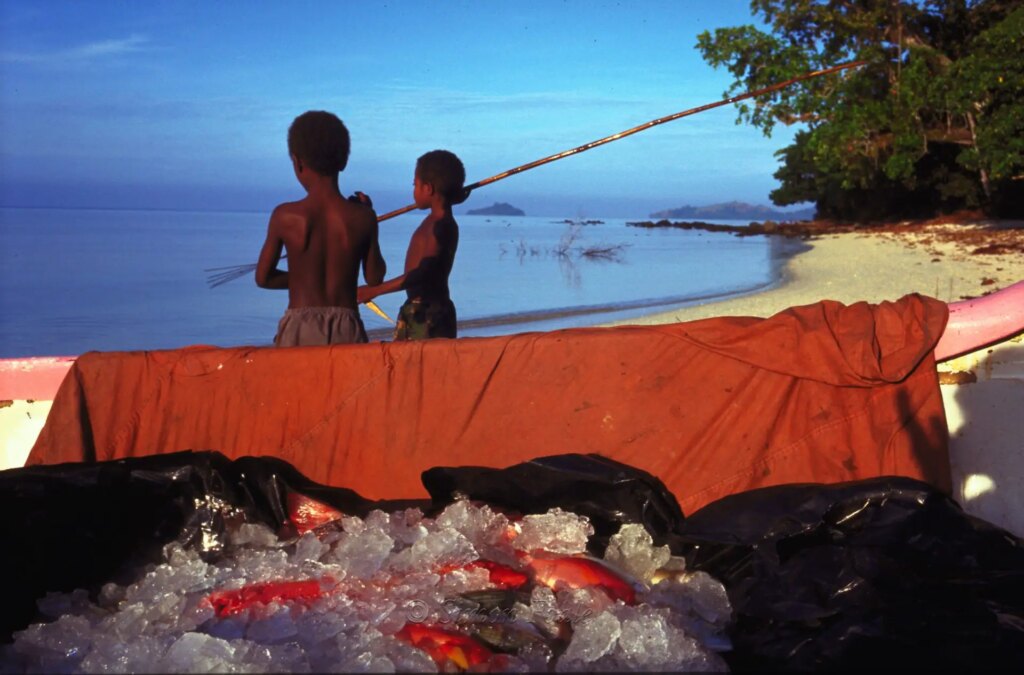
A couple of kids thinking about spearing some fish next to a fibreglass canoe loaded with fish and ice, ready to go to market. Mbokonimbeti (Sandfly) Island, West Nggela, Solomon Islands. This image graced the cover of the third edition of Lonely Planet’s Solomon Islands guide. I personally thought it was an odd choice for a cover pic, but as they say, there’s no accounting for taste.
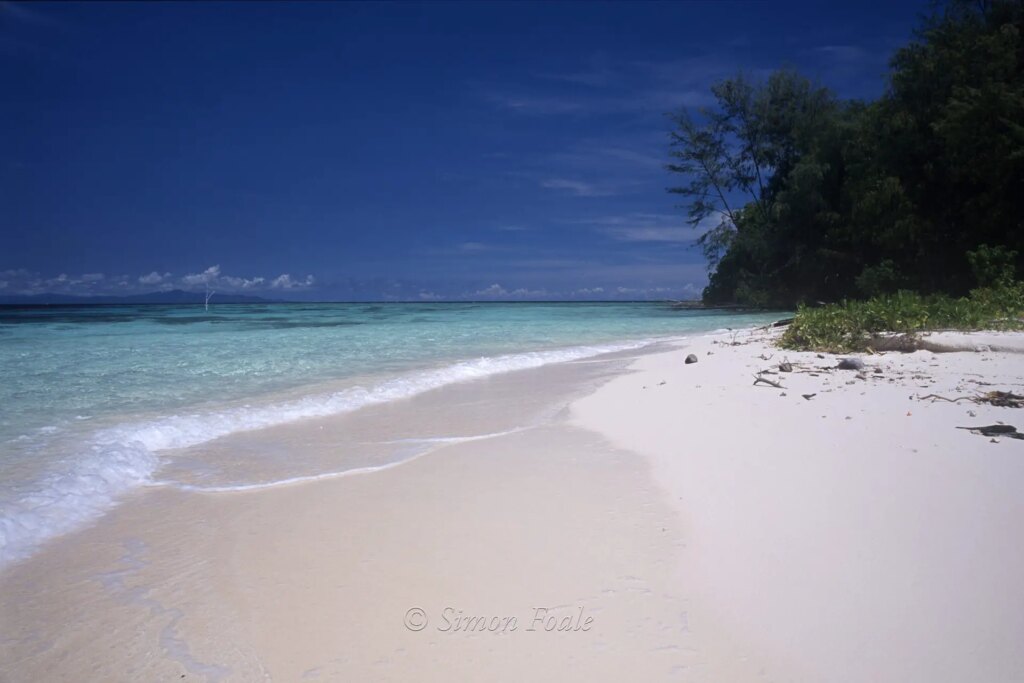
The beach at Kennedy Island, Western Province, Solomon Islands. John F Kennedy apparently swam to this island after his torpedo boat, the ‘PT109’ was rammed by Japanese destroyer Amagiri at night on 2nd August 1943 (https://en.wikipedia.org/wiki/Patrol_torpedo_boat_PT-109). Kennedy Island is one of many fabulous dive sites in the Solomons.
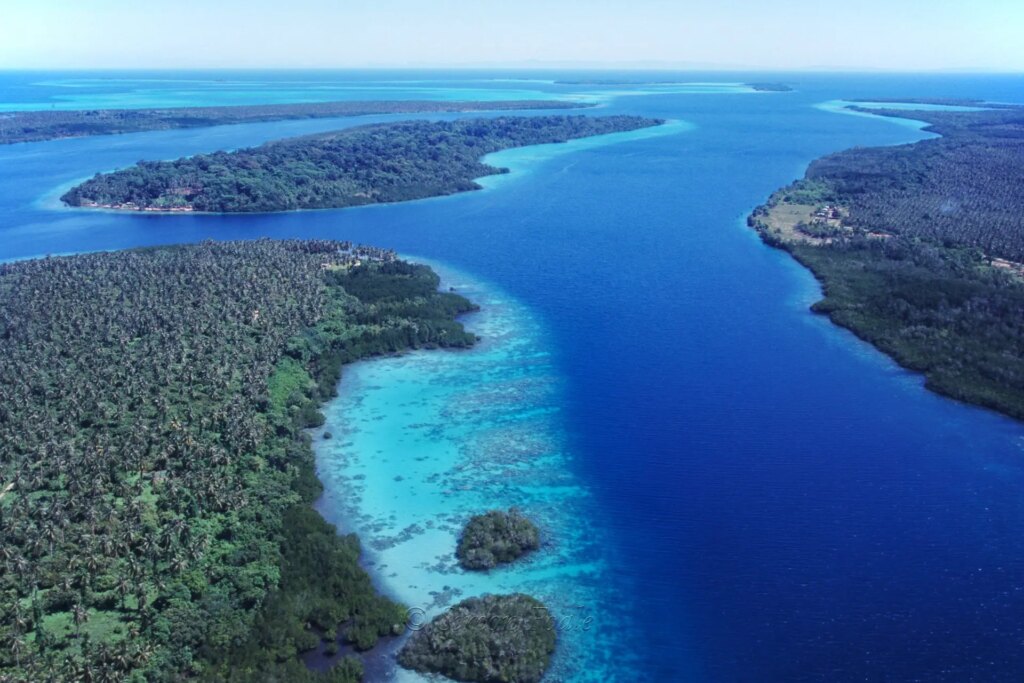
Sunlight passage, between Pavuvu and Banika Islands in the Russell Islands, Central Province, Solomon Islands. The passage is named after Port Sunlight, Liverpool, where the Lever Brothers based their corporate headquarters. Unilever (a merger the brothers made with a Dutch outfit in the late 1920s) was the key investor in the extensive colonial coconut plantations of the Russell islands throughout the early and mid 20th Century. Soap was one of the key markets for the coconut oil (you may have heard of, or even seen, Sunlight soap?).
I was impressed that the Nikonos 35mm lens could produce an image of this quality through the grimy window of a Twin Otter.
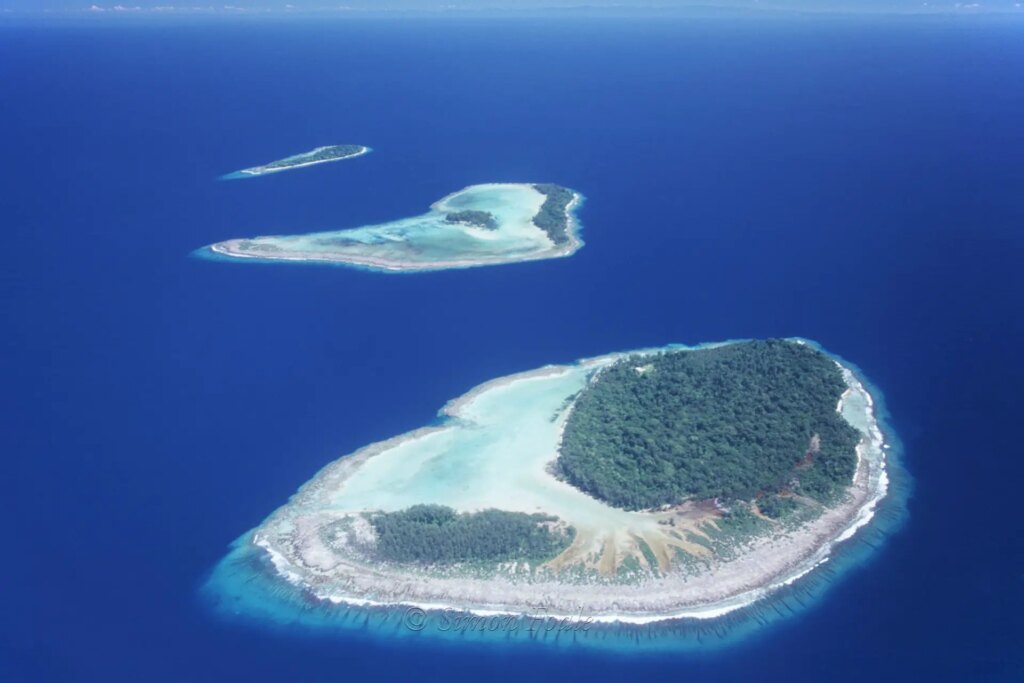
Three islands in the eastern Russell Islands group. The sea was very calm on this day and I had a polarising filter on the lens. Isabel Island can just be made out on the horizon.
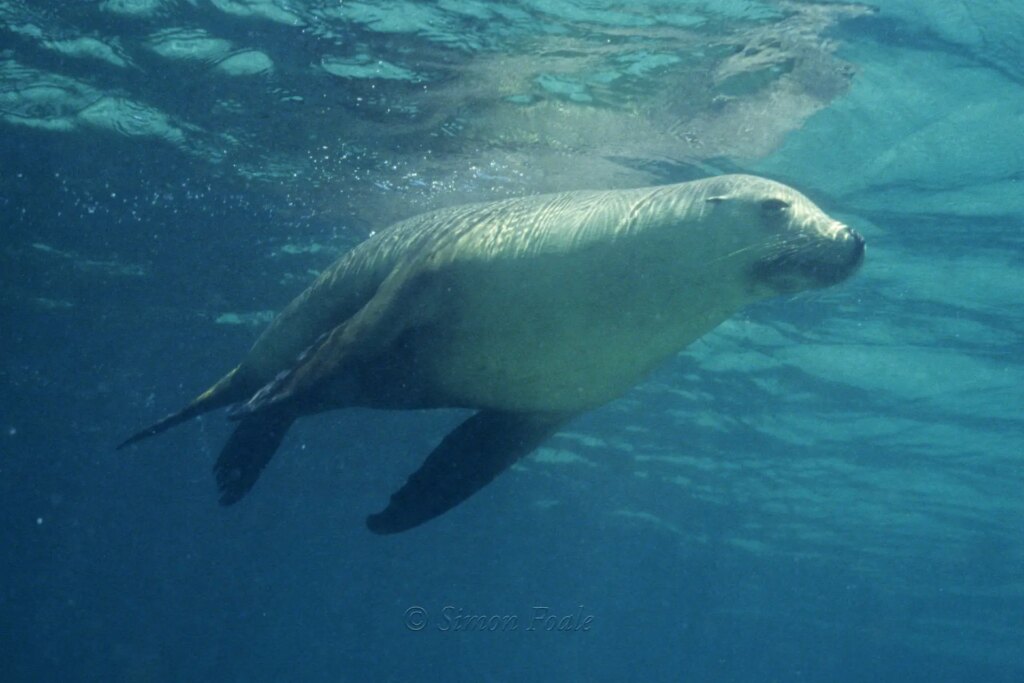
A curious juvenile sea lion. Gambier Islands, South Australia.
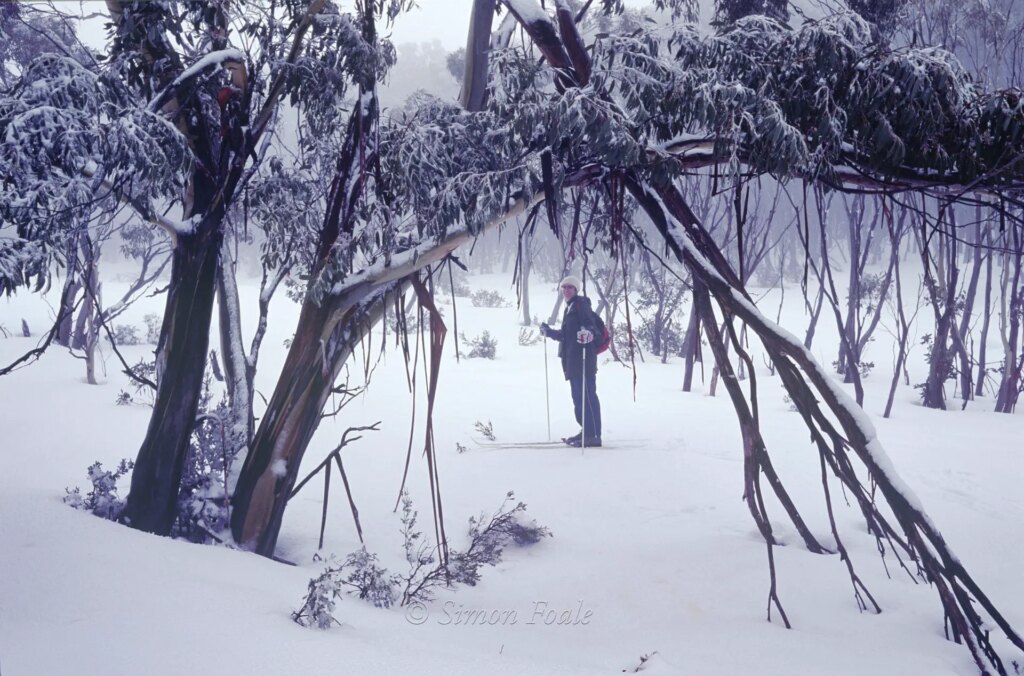
Cross country skiing at Mt St Gwinear, Victoria, Australia. The Nikonos V is an excellent snow camera. You just need to remember to over-expose by about a stop with slide film when snow is the dominant element in the frame.
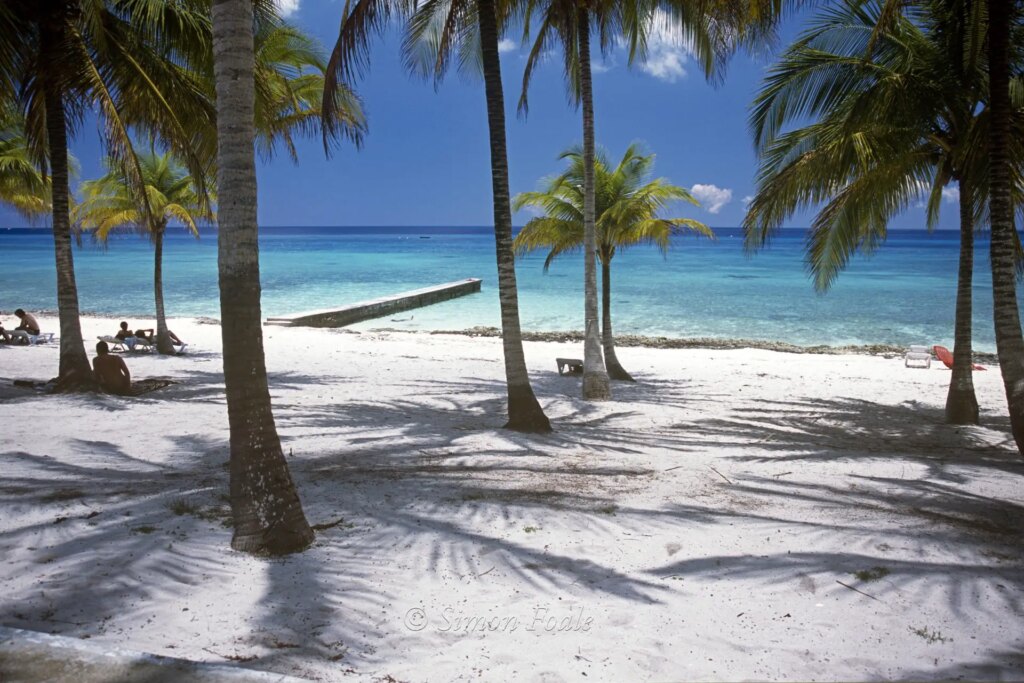
The beach at Maria La Gorda, on the western tip of Cuba. A sensational dive location.
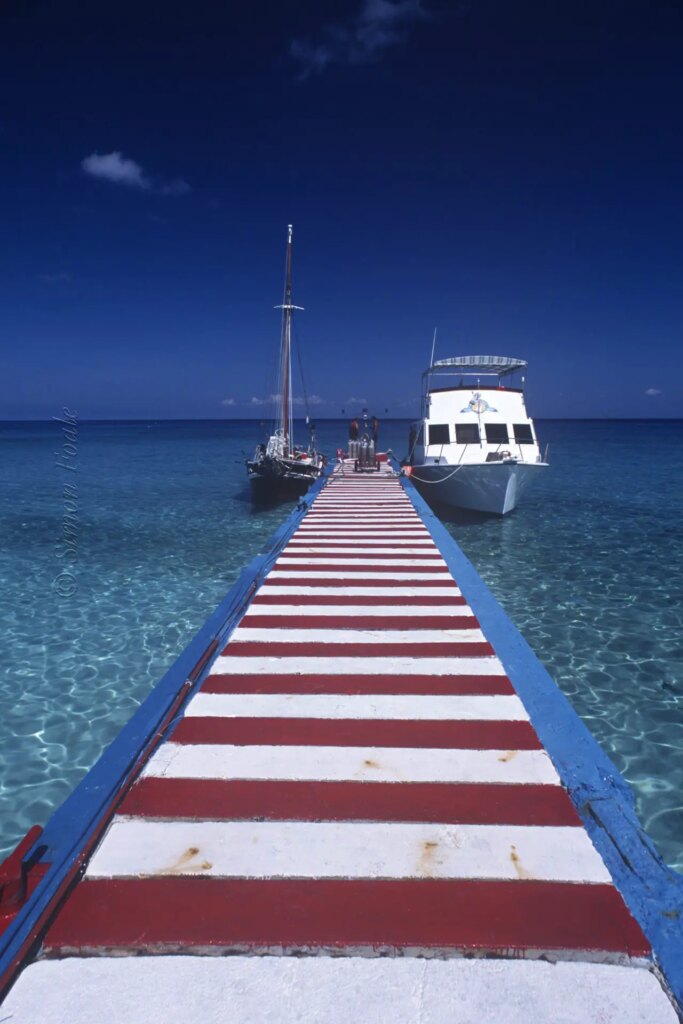
The jetty at Maria La Gorda, Cuba. I had a polarising filter on the lens for this one. This kind of composition used to be popular with stock photography agencies like Lonely Planet Images (which has since been swallowed up by Getty, sadly).
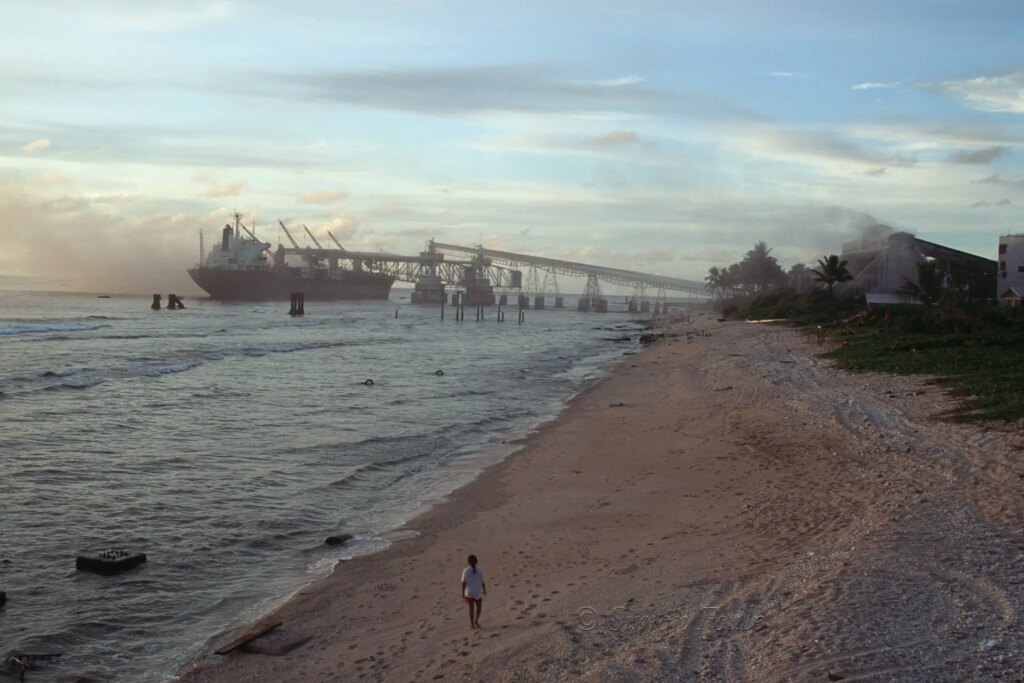
A ship being loaded with phosphate at Nauru Island in the early 90s. By the end of the 90s the phosphate deposit had been completely mined and Nauru lost a lot of money through bad investments. The story of phosphate mining on Nauru and Banaba is a dark one.
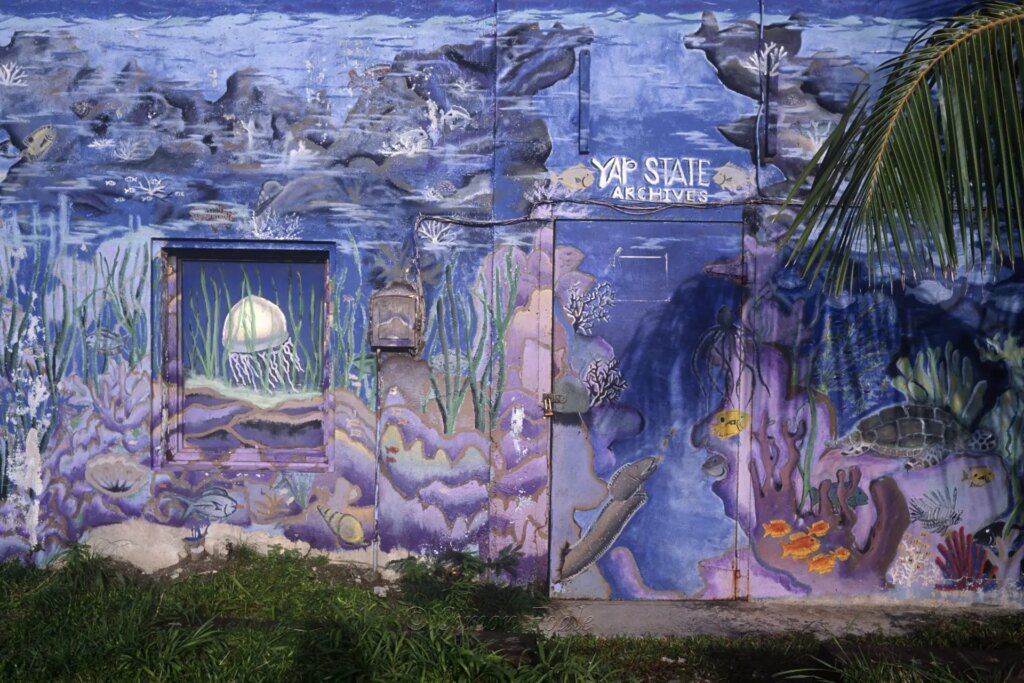
The Yap State Archives building. Yap is the westernmost of the Federated States of Micronesia (called the Caroline Islands in the colonial days).
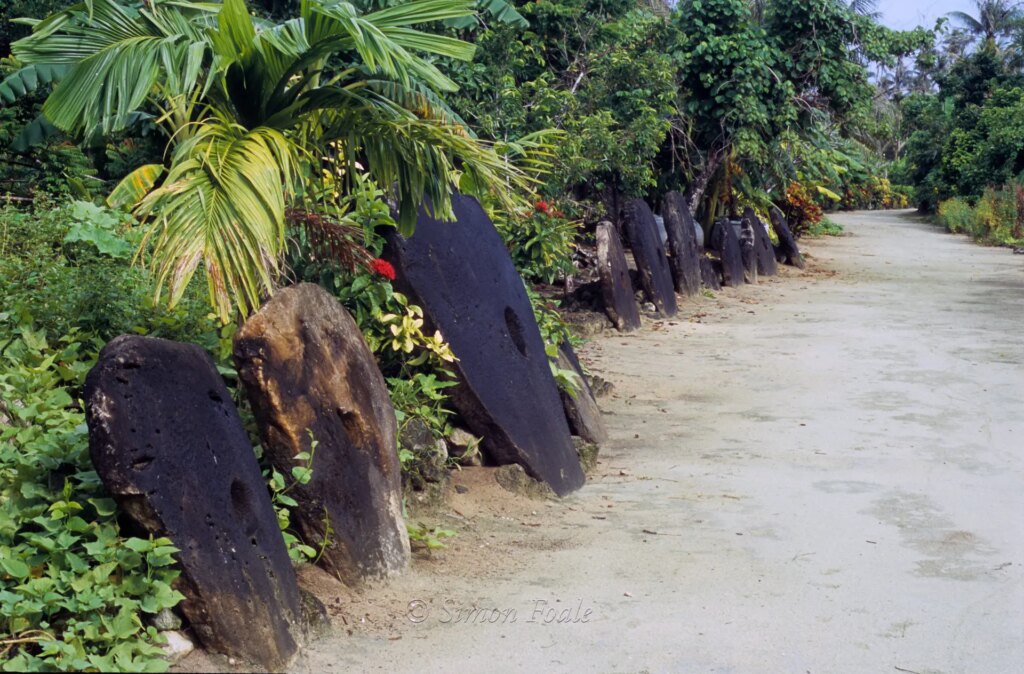
Traditional stone ‘money’ arranged along a road through a village on Yap. Most of these remarkable stone valuables were originally quarried in Palau, over 400km to the south-west, and brought back to Yap on traditional sailing vessels. There’s much more to tell about these very interesting objects and their role in Yapese traditional economy but hey this blog is about photography not anthropology.
Thanks for reading. Needless to say I’m in no hurry to give away or sell this venerable icon of analogue photography heritage any time soon, and have recently decided to try some negative film in it for the first time.
My Flickr page is here.
Share this post:
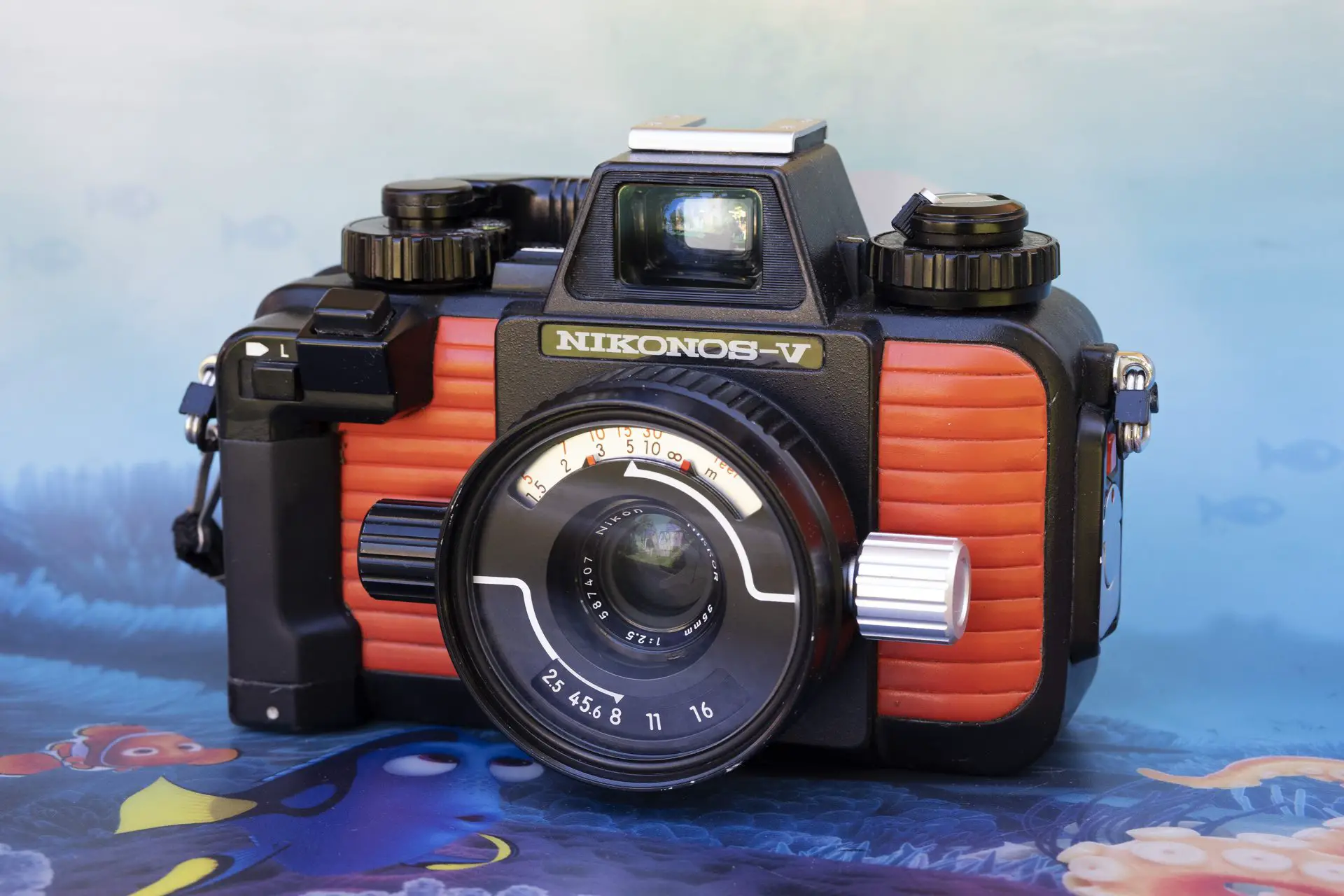








Comments
Anthony Conroy on Nikonos V as Rugged Travel Camera – a Retrospective By Simon Foale
Comment posted: 01/08/2022
The 35mm Nikonos lens is sadly overlooked when it comes to shooting on dry land
The sweet spot in my opinion is f8 in sunny conditions up to 400asa
The hard to find and rather expensive 28mm LW- Nikkor strictly for above water is also very nice to use
Comment posted: 01/08/2022
Gary Paudler on Nikonos V as Rugged Travel Camera – a Retrospective By Simon Foale
Comment posted: 01/08/2022
Comment posted: 01/08/2022
sonny rosenberg on Nikonos V as Rugged Travel Camera – a Retrospective By Simon Foale
Comment posted: 01/08/2022
I don't get much closer to water than taking a bath or shower these days, but I've considered a Nikonos as an all weather camera for the high desert where I live.
Comment posted: 01/08/2022
Don Goodman-Wilson on Nikonos V as Rugged Travel Camera – a Retrospective By Simon Foale
Comment posted: 01/08/2022
Comment posted: 01/08/2022
Alistair Merrifield on Nikonos V as Rugged Travel Camera – a Retrospective By Simon Foale
Comment posted: 02/08/2022
Comment posted: 02/08/2022
John Murch on Nikonos V as Rugged Travel Camera – a Retrospective By Simon Foale
Comment posted: 02/08/2022
Comment posted: 02/08/2022
Johan on Nikonos V as Rugged Travel Camera – a Retrospective By Simon Foale
Comment posted: 02/08/2022
Comment posted: 02/08/2022
Dan Castelli on Nikonos V as Rugged Travel Camera – a Retrospective By Simon Foale
Comment posted: 09/08/2022
An informative lushly illustrated article. I just saw a show of Martin Parr’s b&w work last spring He used a Nikonos 3 for some of his foul weather work that he shot in the UK because he didn’t want to destroy his Leica’s. I worked in a camera store catering to the aircraft and ship building industries in the early 1970’s (yeah, I’m that old..)
We sold a few of Nikonos 2 & 3’s to the US Navy.
Comment posted: 09/08/2022
Pawel Achtel on Nikonos V as Rugged Travel Camera – a Retrospective By Simon Foale
Comment posted: 27/10/2022
Comment posted: 27/10/2022
Comment posted: 27/10/2022
Comment posted: 27/10/2022